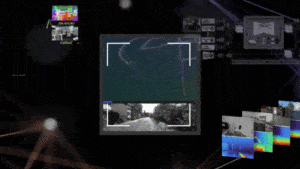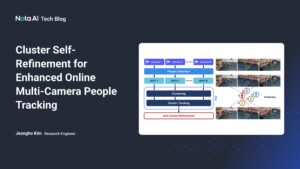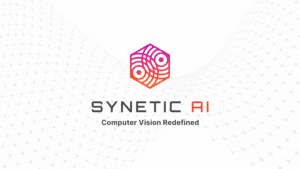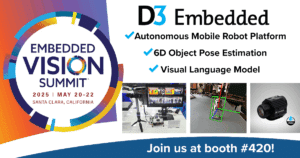Object Identification Functions

“Computer Vision at Sea: Automated Fish Tracking for Sustainable Fishing,” a Presentation from Tryolabs and the Nature Conservancy
Alicia Schandy Wood, Machine Learning Engineer at Tryolabs, and Vienna Saccomanno, Senior Scientist at The Nature Conservancy, co-present the “Computer Vision at Sea: Automated Fish Tracking for Sustainable Fishing” tutorial at the May 2025 Embedded Vision Summit. What occurs between the moment a commercial fishing vessel departs from shore and… “Computer Vision at Sea: Automated

“Beyond the Demo: Turning Computer Vision Prototypes into Scalable, Cost-effective Solutions,” a Presentation from Plainsight Technologies
Kit Merker, CEO of Plainsight Technologies, presents the “Beyond the Demo: Turning Computer Vision Prototypes into Scalable, Cost-effective Solutions” tutorial at the May 2025 Embedded Vision Summit. Many computer vision projects reach proof of concept but stall before production due to high costs, deployment challenges and infrastructure complexity. This presentation… “Beyond the Demo: Turning Computer

How to Select the Right Camera for Pick and Place Robots
This blog post was originally published at e-con Systems’ website. It is reprinted here with the permission of e-con Systems. Pick and place robots handle repetitive, labor-intensive tasks. They help deliver high throughput and seamless workflows, thanks to camera solutions. Get expert insights on how cameras work in these robots, their challenges, use cases, and

R²D²: Building AI-based 3D Robot Perception and Mapping with NVIDIA Research
This blog post was originally published at NVIDIA’s website. It is reprinted here with the permission of NVIDIA. Robots must perceive and interpret their 3D environments to act safely and effectively. This is especially critical for tasks such as autonomous navigation, object manipulation, and teleoperation in unstructured or unfamiliar spaces. Advances in robotic perception increasingly

Cluster Self-refinement for Enhanced Online Multi-camera People Tracking
This blog post was originally published at Nota AI’s website. It is reprinted here with the permission of Nota AI. Online multi-camera system for efficient individual tracking Accurate ID management with Cluster Self-Refinement (CSR) Improved performance with enhanced pose estimation In this paper, we introduce our online MCPT methodology, which achieved third place in Track1

STMicroelectronics Introduces Advanced Human Presence Detection Solution to Enhance Laptop and PC User Experience
New technology delivers more than 20% power consumption reduction per day in addition to improved security and privacy ST solution combines market leading Time-of-Flight (ToF) sensors and unique AI algorithms for a seamless user experience Geneva, Switzerland, June 17, 2025 — STMicroelectronics (NYSE: STM), a global semiconductor leader serving customers across the spectrum of electronics

AI On Board: Near Real-time Insights for Sustainable Fishing
This article was originally published at Tryolabs’ website. It is reprinted here with the permission of Tryolabs. Marine ecosystems are under pressure from unsustainable fishing, with some populations declining faster than they can recover. Illegal, unreported, and unregulated (IUU) fishing further contributes to the problem, threatening biodiversity, economies, and global seafood supply chains. While many

Learn about Computer Vision
This blog post was originally published at Synetic AI’s website. It is reprinted here with the permission of Synetic AI. Synthetic data is revolutionizing computer vision. Synetic.ai provides an automated platform for generating training datasets that are photorealistic, annotated, and customizable. Computer vision is the process of extracting meaning from images using statistical patterns in

How to Choose the Right Fleet Camera System
This blog post was originally published at e-con Systems’ website. It is reprinted here with the permission of e-con Systems. Fleet camera systems increase a vehicle’s operational safety by capturing real-time footage of the cabin, driver behavior, and vehicle surroundings while in transit. Fleet camera systems come with dashcams, 360-degree surround view systems, interior cameras,

AI Helps Locate Dangerous Fishing Nets Lost at Sea
This blog post was originally published at NVIDIA’s website. It is reprinted here with the permission of NVIDIA. Conservationists have launched a new AI tool that can sift through petabytes of underwater imaging from anywhere in the world to identify signs of abandoned or lost fishing nets—so-called ghost nets. Each year, around 2% of the

How Vision-based Shelf Monitoring Helps Retailers
This blog post was originally published at e-con Systems’ website. It is reprinted here with the permission of e-con Systems. Shelf monitoring systems are critical for maintaining stock levels, improving product availability, and helping display correct promotions and pricing. Learn how these systems are used in real-world scenarios and how to choose the right set

3D Sensing for In-cabin Monitoring
This blog post is derived from a joint press release by Airy3D and Seeing Machines. It is reprinted here with the permission of Airy3D. A four-year partnership between Airy3D Inc., a Montreal based 3D technology company, and Seeing Machines, an advanced computer vision technology company that designs AI-powered operator monitoring systems to improve transport safety,

“Rapid Development of AI-powered Embedded Vision Solutions—Without a Team of Experts,” a Presentation from Network Optix
Marcel Wouters, Senior Software Engineer at Network Optix, presents the “Rapid Development of AI-powered Embedded Vision Solutions—Without a Team of Experts” tutorial at the May 2025 Embedded Vision Summit. In this presentation, Wouters shows how developers new to AI can quickly and easily create embedded vision solutions that extract valuable… “Rapid Development of AI-powered Embedded

Key Drone Terminology: A Quick Guide for Beginners
This blog post was originally published at Namuga Vision Connectivity’s website. It is reprinted here with the permission of Namuga Vision Connectivity. As drone technology becomes more accessible and widespread, it’s important to get familiar with the basic terms that define how drones work and how we control them. Whether you’re a hobbyist, a content

D3 Embedded to Showcase Robotic Perception and Generative AI Solutions at the Embedded Vision Summit
D3 Embedded to demonstrate real-time solutions integrating cameras and 3D sensors, robust connectivity, embedded processing, and generative AI at the Embedded Vision Summit. Rochester, NY – May 15, 2025 – D3 Embedded announced today it will exhibit at the 2025 Embedded Vision Summit, the premier event for practical, deployable computer vision and AI, for product

What is the Role of Cameras in Pick and Place Robots?
This blog post was originally published at e-con Systems’ website. It is reprinted here with the permission of e-con Systems. Pick and place robots perform repetitive handling tasks with speed and consistency, making them invaluable across industries. These robots depend heavily on the right camera setup. Get insights about the challenges faced by cameras, their

What is an Industrial Inspection Camera, And Where is It Used?
This blog post was originally published at e-con Systems’ website. It is reprinted here with the permission of e-con Systems. Imaging technology in industrial inspection has significantly evolved over the years. Hence, finding the right camera is extremely important. Get expert insights on these camera-based systems, their top use cases, and the must-have features. The

Collaborative Robots Drive Workforce Return in Auto Industry
Analysis of the cobots market penetration by different tasks and industries. Collaborative robots (cobots), a type of lightweight and slow-moving robot designed to work next to human operators without a physical fence, have gained significant momentum thanks to their flexibility and the initiatives of bringing humans back to factories, industry 5.0, and many announcements from

